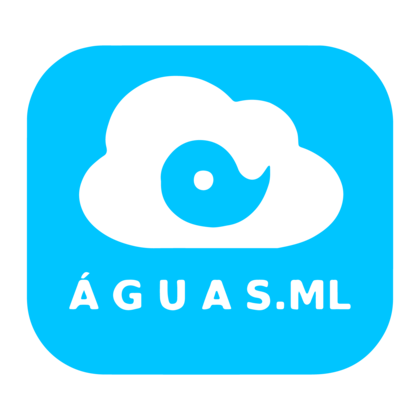Water canals threaten global wildlife
Scientists highlight the greatest impacts and how to curb the killing to avoid harming global wildlife conservation
Deadly drownings of animals in water canals for irrigation and other purposes have been observed in various countries. The dry and semi-arid regions of the planet are even more vulnerable to these losses, but there are alternatives to protect wildlife.
Scientists like Diego Gallego-García came across wildlife drowned to death in and around an irrigation and water supply canal while researching birds in northern Argentina. The losses recorded were striking.
More than 200 animals from 35 species died in six months, according to an article in the journal “Biological Conservation” authored by García and José Sarasola . They are affiliated with the National Council for Scientific and
Technical Research (CONICET – Consejo Nacional de Investigaciones Científicas y Técnicas) and the National University of La Pampa. The drownings occurred in the “Canal de la Pátria,” which steep concrete walls cut through 250 km of the Gran Chaco. This is the most biodiverse continuous forest system in South America, after the Amazon rainforest.
The victims include various species, some even threatened with extinction, such as 38 giant anteaters (Myrmecophaga tridactyla), a large ant and termite eater typical of South American savannas.
The study also recorded that the number of animal deaths declined over the months analyzed, but this signals something even more serious.
“We may be witnessing a defaunation [rapid extinction of wildlife] process along the canal. This is very serious for the conservation of wildlife species and a problem that has so far been kept silent”, highlights García. The damages are likely widespread across the country but have not been assessed.
At least 6,000 km of canals cross Argentina’s arid and semi-arid areas. The damaged concrete of these structures is often replaced by slippery plastic tarpaulins, which make it harder for animals to escape. This reinforces their role as “wildlife traps”, warn the researchers.




Globalized drownings
Fatal drownings of animals also occurred in an irrigation system just 1.5 km long, connected to the protected wetland area Bordo Las Maravillas, in the municipality of Toluca, Mexico, located between North and Central America.
A study published in the scientific journal “PeerJ” documented 227 drowned animals from a dozen different species, including birds, amphibians, and especially mammals and reptiles. The survey lasted for 2 years.
At the site, canals with rectangular concrete walls are controlled by sluices, where animals also end up getting trapped, explains Hublester Domínguez-Vega, one of the authors of the study.
“The system is small, but it has a high impact on so many species,” highlights the PhD in Agricultural Sciences and Natural Resources Management from the Autonomous University of the State of Mexico (UAEM – Universidad Autónoma del Estado de México).
For him, there is a widespread lack of understanding worldwide about how the construction and operation of water canals affect biodiversity. “We are only scratching the surface of these issues”, he assesses.

Native to the Sonora Desert in the United States and Mexico, the pronghorn (Antilocapra americana sonoriensis) is the fastest land mammal in North America, reaching speeds of 80 km/h. However, this did not spare it from drowning in water canals.
The drownings were recorded by Paul Krausman, a professor of Wildlife and Fisheries Sciences at the University of Arizona and one of the few researchers focused on such impacts on wildlife.
His studies show the deaths of deers and other animals in systems like the All-American Canal. Its 130 km stretch connects the Imperial Dam, on the Colorado River, to nine cities and 2,000 km2 of irrigated land in California state.
For Krausman, any loss due to drowning in canals harms biodiversity, especially for endangered species. “Canals are just one of many challenges animals face”, he says.
“If these damages are overlooked or unknown in other countries, it’s probably because they haven’t been studied”, warns the scientist. The global area to be assessed is vast and continues to grow.
Global irrigation covers between 2.55 million km2 and 3.05 million km2, slightly smaller than the territory of India. These figures are from the FAO, the Food and Agriculture Organization of the United Nations.
In countries on the other side of the Atlantic Ocean, the situation seems no less fatal for wildlife.
Scientific studies reported 538 wild and domestic mammals drowned in canals in Spain over a period of 5 years, and also indicated that amphibians would be the biggest victims of these structures in the European country.
Other studies identified drowning in water canals as the second leading cause of unnatural deaths for wild boars (Sus scrofa) in Spain. The first is road traffic collisions.
In the Los Payuelos canal, in the León region, repeated drownings of roe deer (Capreolus capreolus), relatives of deers and antelopes, have been recorded. In one incident a few years ago, 28 of these animals died.


Drownings also occurred in the Arriola and Villalaco canals in central-northern Spain. Similar structures are found throughout the country, for irrigation, water supply, or transportation.
Smaller species are the most affected by these systems, says Alberto Fernandez Lopez, from WWF-Spain’s Water Program. “There is a lack of research and serious action on the issue”, warned the PhD in Biology from the Complutense University of Madrid.
In the eastern Iberian Peninsula, Portugal also has deadly canals for wildlife.
A study published in the journal Basic and Applied Ecology recorded drowned mammals and carnivores in seven canals in the southern part of the country, with an average length of 12 km each.
The victims include the common genet (Genetta genetta), as well as the mammals european polecat (Mustela putorius), mongoose (Herpestes ichneumon), otter (Lutra lutra), badger (Meles meles), and red fox (Vulpes vulpes).
The deaths occurred despite the concrete canals being theoretically isolated by wire fences 1.5 meters high, with an additional 50 cm underground.
“The results are relevant as more irrigation canals are being built to cope with increased droughts and greater demand for food”, highlight the scientists from the universities of Évora and Lisbon, as well as the Alqueva Development and Infrastructure Company (Edia – Empresa de Desenvolvimento e Infra-estruturas do Alqueva, S.A.).
There is over 37,000 km2 of irrigated land in Portugal and Spain, according to the FAO (Food and Agriculture Organization of the United Nations). This area is similar to half the size of Panama or a quarter of the Brazilian state of Ceará.

Connecting dots
Roadways, railways, and artificial water canals complicate animal movement and cause fatalities through collisions and drownings. Their “barrier effect” can also isolate populations, compromising reproduction and food access for wildlife.
“Road damage is much more visible. People drive by and can see many of the dead animals”, recalls Edgar van der Grift, a researcher in the Department of Animal Ecology at Wageningen University in the Netherlands.
The situation suggests that reducing animal mortality and the negative impacts on biodiversity conservation in water canals will require intense scientific, legal, technical, and economic efforts, as well as urgent actions from governments worldwide.
“Although canals are one of the leading causes of direct wildlife mortality, they receive little attention”, points out Hublester Domínguez-Vega, PhD in Agricultural Sciences and Natural Resources Management from the Autonomous University of the State of Mexico.
The problem is growing alongside the global trend of increasing artificial irrigation to produce food in response to population growth and the accelerated effects of the climate crisis, such as reduced rainfall, higher temperatures, and droughts.
“Savannas are more susceptible to these impacts and greater harm to wildlife”, says Morati Mpalo, from the Department of Earth and Environmental Sciences at the Botswana International University of Science And Technology.
He is one of the authors of an article published in the journal Land , indicating that artificial water sources not only drown wildlife but also disrupt natural environments. The studies were conducted in the Chobe Enclave, in the northern part of the African country.
“This continuous water supply disturbed a drought-sensitive landscape, affected wildlife, and the heterogeneity of vegetation, indicating it causes ecological changes in savannas”, emphasizes Mpalo.
Considering this, Rodrigo Gerhardt, from the NGO World Animal Protection in Brazil, stresses that the cumulative ecological damage caused by irrigation systems is a “global scandal” that “needs to come out of the shadows”.
“The cost of neglecting the damage caused by this activity is showing up in the deaths of countless native and domestic specimens, in the imbalance of ecosystems, and in the worsening of the climate crisis”, emphasizes.


Overcoming impacts
Diego Gallego-García, from the National Scientific and Technical Research Council of Argentina (CONICET – Consejo Nacional de Investigacion Científicas e Tecnicas), believes that the only real solution for wildlife is to completely cover these water canals.
“It is an urgent issue. They are silent killing machines for wildlife, still greatly underestimated worldwide”, emphasizes the researcher, who is also affiliated with the National University of La Pampa.
Covering open canals would also reduce the “barrier effect”, a problem that can be reinforced by other means of containing animal drownings, such as fences alongside structures that could stretch for hundreds of kilometers.
“Bridges, tunnels, and ditches help animals cross water canals, but they are not used by all species and are not effective solutions for preventing deaths and the fragmentation of natural habitats”, adds García.
Paul Krausman, Professor of Wildlife and Fisheries Sciences at the University of Arizona (USA), reminds us that it is equally possible to facilitate the exit of animals from artificial water canals and reservoirs.
“Ramps, animal ladders, and structures with abrasive walls allow many animals that have fallen to escape death,” he says.
In this regard, attempting to save animal lives in both artificial and natural watercourses is a policy adopted in the Netherlands, a country crisscrossed by canals used for irrigation, public water supply, and navigation.
“The impacts of the canals may seem small, but drownings of species with smaller populations can severely affect their conservation”, explains Edgar van der Grift from Wageningen University.
In the European country, water canals are equipped with speed reducers and ramps to facilitate the exit of wildlife, domestic fauna, and even people. “They are installed along both sides of the canals”, he explains.


Domínguez-Vega (from the Autonomous University of the State of Mexico) states that mitigating the damage caused by open-air irrigation requires thorough assessments in each region and may even involve redesigning the canals to minimize harm to animals.
“Greater knowledge is needed before any measures are taken, so as not to pursue short-term agendas with false solutions”, he warns. “However, there is no single solution to the lethality of the canals”, he acknowledges.
This is a scenario that undoubtedly calls for a reconsideration of irrigation practices worldwide, in order to balance the socioeconomic benefits of the activity with the protection of habitats and native species.
“Advocating for proper use does not mean being against irrigation. Agriculture and other activities can use water without killing wildlife”, says Gallego-García (National Council for Scientific and Technical Research of Argentina).
The governments of Mexico, Argentina, Portugal, Spain, and Botswana have not reported whether they monitor and take action in their territories to prevent fatal drownings of wildlife in irrigation canals and other water channels up until the publication of this report.
The FSW , the U.S. Fish and Wildlife Service, stated that there are proposals to install nets and alerts in navigation locks and other water controls in Florida and Puerto Rico to reduce collisions, injuries, and crushing of the endangered manatee.
This article is part of the special project Massacre Invisível and was produced with the support of Proteção Animal Mundial
Fonte
O post “Water canals threaten global wildlife” foi publicado em 06/02/2025 e pode ser visto originalmente diretamente na fonte ((o))eco







